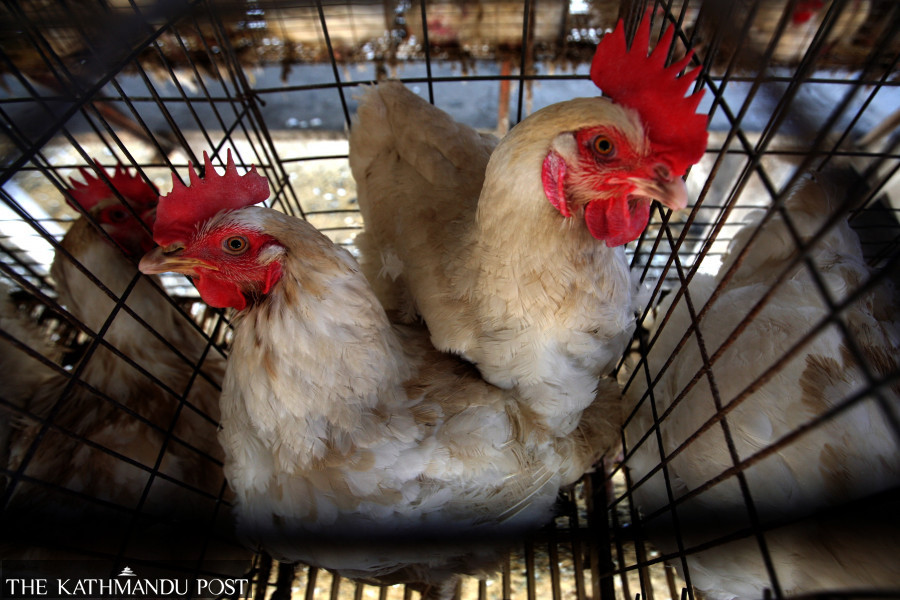Health
Over 11,600 birds culled following A(H5N1) confirmation
An avian flu outbreak at a Lalitpur-based government farm around two weeks ago has been confirmed to have spread to at least six local units in the Valley.
Post Report
As many as 11,672 domestic birds—layers, New Hampshire and local chickens, ducks, turkeys and quail—have been culled following confirmation of A(H5N1) virus, also known as bird flu or avian influenza virus.
The deadly virus, first found around two weeks ago at the Lalitpur-based Nepal Agriculture Research Council’s turkey farm, has spread to at least six local units in Kathmandu Valley.
“Along with domestic birds of the disease-hit farms, we have also destroyed 11,085 eggs, 1,000 kg feed, 1,000 eggs, 1,000 egg crates and disinfected the farms,” said Dr Chandra Dhakal, information officer at the Department of Livestock Services. “We have also stepped up surveillance to lessen risks of spread of the virus in other areas.”
According to the department, outbreaks of the virus have been reported in Lalitpur Metropolitan City, Kathmandu Metropolitan City, Tarakeshwar Municipality, Nagarjun Municipality, Kirtipur Municipality and Changunarayan Municipality.
Samples of dead birds were sent to the Central Veterinary Laboratory, which carried out real-time polymerase chain reaction testing and confirmed that the highly pathogenic avian influenza A(H5N1) was responsible for the deaths of the birds.
H5N1 is a lethal bird flu virus strain that is highly pathogenic. The virus was first detected in birds in 2009 in Nepal.
Nepal had also reported a human death from the virus in 2019. A 21-year-old man from Kavrepalanchok who drove a poultry truck had died of a respiratory infection in the course of treatment. The World Health Organisation (WHO) Collaborating Centre for Influenza in Japan had confirmed the A(H5N1) infection in him after his death.
The first A(H5N1) infection in humans was reported in 1997 in Hong Kong and the virus has since spread to Asia, Africa, Middle East and Europe and other parts of the world, causing millions of poultry infections.
Although rare, confirmed human cases for bird flu as reported by the WHO from 2003 to November 25 last year stand at 868 human cases and 457 deaths with case fatality rate standing at 53 percent. According to the UN body, almost all cases of H5N1 have been associated with close contact with infected live or dead fowls or contaminated environment.
While the virus does not seem to be spreading from one human to another, a major concern among scientists is that the virus could mutate or combine with another influenza virus into something more infectious and result in a pandemic.
The World Organisation for Animal Health warned that a wave of bird flu in Asia and Europe has a greater risk of spreading to humans because of the high number of variants.
Nepal witnessed a massive bird flu outbreak in 2022 when it spread in 15 districts. Over 600,000 fowls were culled at the time. But authorities have not yet provided compensation to the poultry farmers.
Hundreds of farmers who were involved in poultry farming gave up the profession due to the outbreak and are now struggling to get the compensation amounts for their birds that were culled by authorities.




 12.99°C Kathmandu
12.99°C Kathmandu












%20(1).jpg&w=300&height=200)
